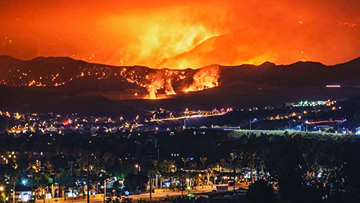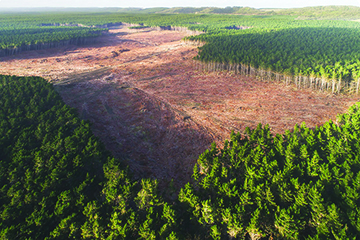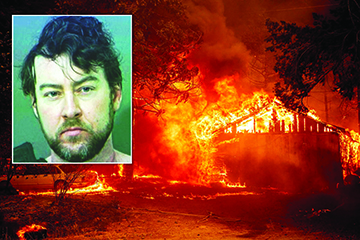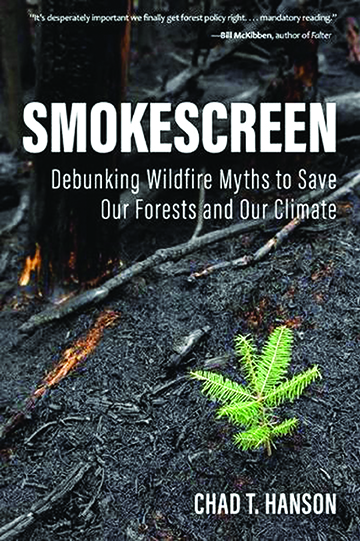“We didn’t start the fire/It was always burning, since the world’s been turning.” Billy Joel
The brown cloud which frequently blankets the Mile High City has long been recognized as an unfortunate byproduct of progress. Since the 1980s, locally produced carbon emissions from coal-based energy production, oil refinement and the automotive combustion of gasoline has created a problematic airborne miasma. In the last few years, Denver has been given distinction among the top 10 cities with the poorest air quality in the United States. Federal records show air pollution was at elevated levels for more than 260 days a year in 2019 and 2020.
Meanwhile out West, the Golden State is leading the way in the creation of a different type of pollution, wildfire smoke. Just as California exports entertainment, social trends, and hordes of transplants, it also sends a generous share of air particulates from incinerated vegetation to round out its contribution to Colorado. A place that, as anyone who lives here knows, is already dealing with its own wildfire crises.
Paper Is Made From Wood
To understand the proliferation of pollution, all you have to do is follow the money. America’s addiction to coal-based energy and oil-based propulsion has stakeholders running the ship aground who are perched in plain sight. The same is true with wildfire-based pollution. The logging industrial complex, which is particularly busy in some parts of California, is making a mint while communities are being destroyed, lives are being lost, and Colorado is choking on the ashes.
So far this year, Cal Fire (fire.ca.gov/inci dents) reports 7,377 fire incidents which have killed three people, destroyed 3,285 structures, and burned 2,243,663 acres of forest. The latter statistic is of particular interest here, as the massive plumes of smoke are systematically swept up by jet streams, carried inland, and deposited at the eastern base of the Rocky Mountains.
A Climate-Driven Performance Enhancer

Lucy Walker’s film “Bring Your Own Brigade” tells the story of how concentrated fuel sources are creating fires that can’t be stopped.
Clearly, this phenomenon is ramping up in tandem with global warming. Unnaturally dry conditions can turn large expanses of forest into an incendiary event waiting to turn the tiniest spark into a nightmare inferno. Some of these blazes occur in clear-cut areas which have been recently “thinned” by logging operations both private and government-operated. For decades, the United States Forest Service (USFS) has conducted these “thinning” initiatives under the guise of “fire prevention” but the data overwhelmingly demonstrates that wildfires tend to spread faster and with much more intensity in clear-cut areas due to dry conditions and contiguous acres of branches and logs which were left over from the logging process. Recent examples include the Dixie Fire which incinerated large parts of the Sierra Nevada town of Greenville and the Caldor Fire which destroyed the entire town of Grizzly Flats, CA.
Chad Hanson is an Author and ecologist with the John Muir Project. He recently published Smokescreen: Debunking Wildfire Myths to Save Our Forests and Our Planet.
Hanson is an expert in the phenomenon and the region, having conducted fieldwork for his doctoral dissertation in the aforementioned Greenville. In a recent article published on Grist.org, he explains, “The primary focus of the agency’s forest management efforts is selling public trees to private logging companies, which generates about $150 million each year. That may sound like a small portion of its $2 billion budget for land management, but logging also brings in more than $1 billion in annual Congressional appropriated funds, which generate additional revenue that goes back into the agency’s budget.” In a clever pivot, the USFS recently stopped using descriptive terms like logging and timber harvest and instead began conducting the same activities under the banners of terms like forest health, ecological restoration, and fuel reduction. But, as Hanson points out, “Make no mistake. It’s all just logging.”
Rural Overpopulation
There is another dimension of the fire industrial complex at work in California, but it stems from an opposing set of dynamics. Commercial land which has been clear cut is being replanted with dense concentrations of trees slated for harvest as soon as they have matured to a certain height and width. The problem here is that thick concentrations of trees, especially those reduced to drought-choked rows of veritable matchsticks, create an overly-abundant fuel source — one which burns with unstoppable ferocity.

Contrary to popular opinion, clear cutting large sections of forest contributes to the wildfire phenomenon.
Lucy Walker is an Oscar-nominated director whose recent release “Bring Your Own Brigade” is once again heating up the wildfire debate. The film was shot in 2018 during the Thomas Fire in Ventura and Santa Barbara Counties, CA. While the piece makes a strong case for the need to reverse climate change, it also documents how efforts from the USFS and private corporations have created dense forests where a sparse topography once existed — setting the stage for heat- and drought-driven wildfires to thrive. “Comparing photographs makes it very clear,” she explains in the narration. “You can see the changes [through time] and you can see what ‘fire suppression’ has done. Forests just didn’t used to be this thick.” An unnamed resident interviewee confirms this, explaining, “In the past it was more of a savannah situation. Bigger trees spaced farther apart. Now, you’ve created a heat source you can’t stop.”
Professor Pyro

Gary Stephen Maynard, a Criminology professor and holder of a doctorate in Sociology, is accused of lighting forest fires in California.
Gary Maynard is a tenured academic of the California Collegiate system, teaching — quite ironically — criminal justice. The esteemed professor has, until recently, been an enthusiastic contributor to the Golden State’s greatest airborne export. In July and August of 2021, he allegedly went on an unprecedented spree of arson and wholesale destruction. He was recently accused of having set a series of half a dozen fires in the Lassen and Shasta Trinity National Forest areas. These blazes, according to agents from the USFS, were designed to trap authorities and firefighter crews.
Maynard also holds a doctorate in sociology from Stony Brook University in Brookhaven, New York, as well as two additional master’s degrees. Pinpointing his motives will no doubt be a challenge, and reports of court proceedings offer little insight into his mindset — other than repeated denials and blue streaks of profanity aimed at police officers. Whether this is an isolated incident and Maynard is an anomaly, or he is part of a bigger scheme to create anarchy is undetermined. Yet, given the climate of general mania which seems to have much of the general populace in its grip, the idea of a cabal of arsonists creeping about the California woods with a penchant for pyromania is not exactly farfetched.
While California wildfires are certainly not the main culprit of poor air quality in Denver, they are a definite contributor. Hanson and Walker have demonstrated the cause of some of these catastrophes while Maynard has shown how easy they are to ignite. While not wholly unavoidable, wildfires could be reduced were it not for the almighty dollar. This paper byproduct of trees seems to skew the logic of even the most perceptive of people. In this case, it is especially true for those with large government contracts worth many millions of dollars and not a damn to give about who chokes on what, where or when.



